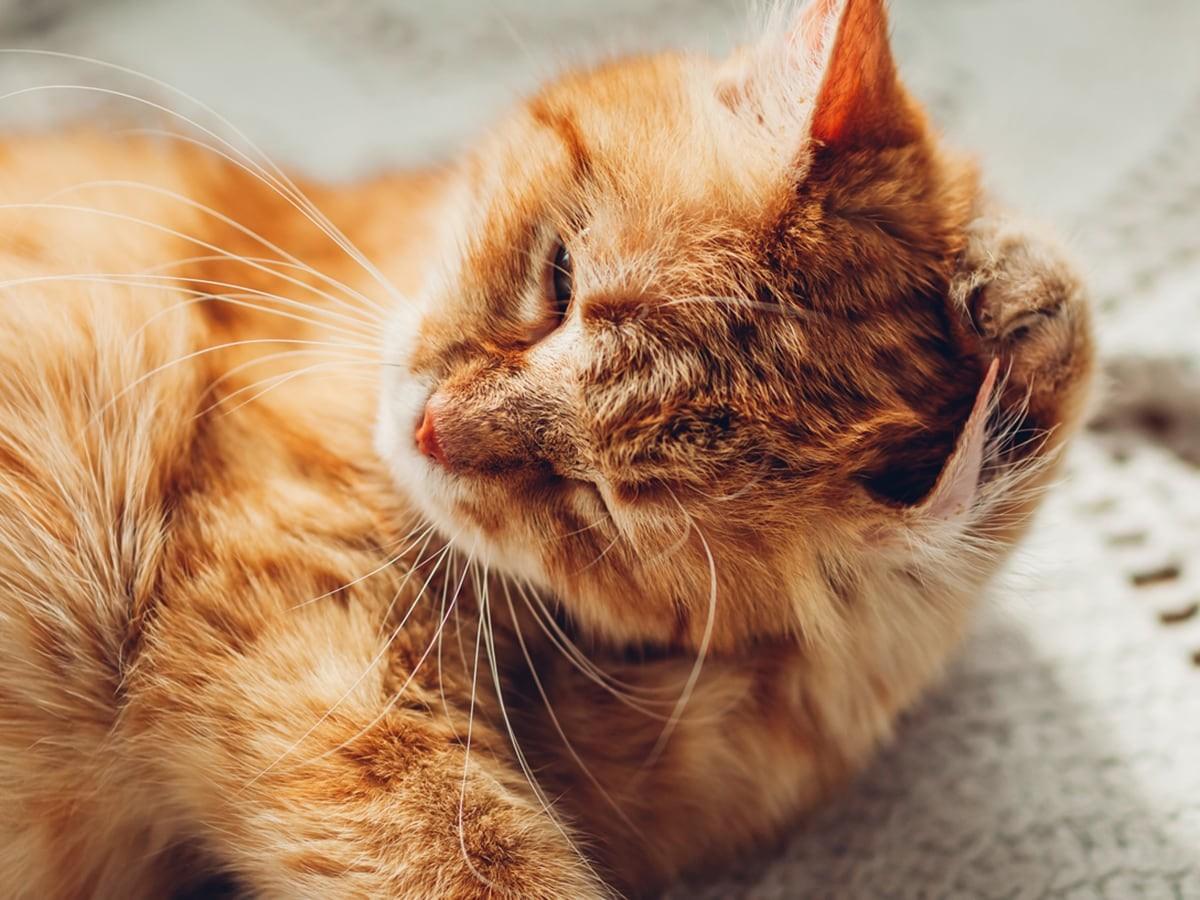Cats typically clean themselves well and don’t require much assistance from their owners in this area. However, some areas on your cat can use some extra TLC from you in order to keep them as clean as they should be. One of those areas is their ears.
Making sure your cat has clean ears will help them in a variety of ways in their daily life. However, it’s important that you do it correctly so that you don’t accidentally injure them while cleaning them. Fortunately, we have every tip you need to be able to clean your kitty’s ears the right way!
What Products to Use on Your Cat’s Ears
One of the first aspects of success when cleaning your cat’s ears is using the right tools for the best cleaning. There are many ear cleaners available over the counter. It’s best that you check with your cat’s vet first to see if they have a cleaner they recommend.
As far as tools go, you should only wipe their ears with a saturated cotton ball and never a cotton swab. Using a swab can cause damage to your cat’s ear canal or push dirt and debris further into their ears.
Steps for Cleaning Your Cat’s Ears
In order to clean your cat’s ears correctly, you will want to follow these steps!
Make sure both you and your cat are comfortable. If it helps them sit still, wrap them up in a towel to make it easier to get to their ears.
Apply the ear cleaner to your cat’s ear canal either with a saturated cotton ball or by squeezing a few drops directly into their ear canal.
Massage the base of your cat’s ear for a few seconds to ensure the cleaner gets spread thoroughly into the ear.
Let your cat shake out any excess cleaner from their ears, and then wipe the leftover off of their ears with a new cotton ball or a piece of gauze.
Repeat the above steps for the second ear.
It’s a good idea to have a treat lined up for your cat so you can reward them with one once you’re done with the cleaning process. While not painful, the ear cleaning process can make your kitty uncomfortable because they have to be held still. Rewarding their ear cleaning with a treat will make them feel better!
If you’re a little nervous about your first ear cleaning, consider getting someone else to help you. One of you can hold the cat while the other cleans the kitty’s ears. This approach can be easier and quicker if you have the option because the extra set of hands makes for a smoother application of the cleaner as well as easier wiping!
How to Know When it’s Time to Clean Your Cat’s Ears
The easiest way to know that your cat is due an ear cleaning is when you notice visible ear wax, debris, or dirt in and around their ears. However, it’s important to know the difference between dirty ears and ear mites because the process of clearing the two conditions is different.
If you notice a substance in your cat’s ears that looks like coffee grounds and your cat is spending more time scratching at their ears than normal, this could mean they are dealing with ear mites, not just normal ear dirtiness. If you are concerned your cat may have ear mites, take them to a vet quickly to get the proper treatment. Untreated ear mites can lead to further complications and discomfort for your kitty.
Issues to Watch for When Cleaning Ears
It’s not every day that you can get an up-close look at your cat’s ears, so it’s a good idea to take advantage of it when you’re cleaning your cat’s ears. While cleaning, look at your cat’s ears and make note of anything that seems out of the ordinary. Signs of an underlying health issue in your cat’s ears include:
Blood, pus, or fluids leaking out
Noticeable odor coming out of the ear
Excessive scratching or digging at ears
Redness inside the ears
Ear swelling
Pain or sensitivity
Masses developing
If your cat has any of these issues, take them to their vet for a thorough examination. Cats tend to hide illnesses and injuries until they are more advanced so catching warning signs early on is the best way to get intervention in a timely manner! This will allow for better treatment as well as a lower risk of long-term complications, the earlier an issue is caught!
Ear Cleaning Frequency
As we mentioned earlier, cats are rather clean creatures and don’t require much help from us in that category. Truthfully, you only need to clean your cat’s ears when they have visible debris. This means it’s possible that you won’t need to ever clean your cat’s ears. However, if your cat tends to get a lot of buildup in their ears, you should check their ears weekly and expect to clean them every one to two months.
Make sure you aren’t cleaning your cat’s ears too much either because that can lead to irritation in your kitty’s ear canal. Another way to avoid irritation is by only cleaning what is visible to you, making you less likely to hurt your cat.
Benefits of Cleaning Your Cat’s Ears
If your cat needs their ears cleaned, there are definitely benefits to doing it for them! First, it allows your cat to be clean, which is something many cats enjoy. In addition to that, clearing out debris and wax from your kitty’s ears can help prevent infections in their ears. Too much buildup in their ears can lead to blockages that can contribute to an ear infection. When you do all that, you can to prevent that from happening, your cat is sure to thank you!
When in Doubt – Get Some Help!
If you’ve read these tips and you’re still nervous about cleaning your cat’s ears, that’s okay! If your cat needs a good ear cleaning and you can’t bring yourself to do it yourself, there are other options! Most of the time your cat’s vet will be able to do an ear cleaning for any cat who needs it. Another option is a pet groomer if you prefer that! The good news is that both are trained for handling ear cleanings correctly and calmly, so you can be comfortable knowing that your kitty will be in good hands!
Takeaway
Cleaning your cat’s ears can be an intimidating process when you first consider it. However, with the right knowledge and tools, it can be a much less stressful experience for both you and your cat! Remember to only clean your cat’s ears when they have visible debris. Also, use the opportunity to do a health examination of your cat’s ears, noting any changes in their ears.
The key to a good ear cleaning is being gentle and taking your time to do it correctly. Of course, never forget to reward your kitty for a job well done once the cleaning is done!

I’m Charlie: canine enthusiast with a knack for figuring out why my dog, Dallas, is more infatuated with tennis balls than me. My lifelong passion for dogs has created a dedication to help other pet parents better understands their furry family members!












